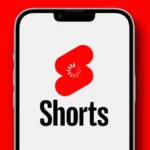
Photo by: Kayla Velasquez
Small Cheapfake = Big Headache
Fakes pollute the information field. Otherwise, we wouldn’t coin an antispoofing definition. Interestingly, cheapfakes are older than deepfakes. They first appeared in an era when computers were slower than a sedated sloth and Tetris was still a novelty.
A punk group Crass stitched together excerpts from speeches by Thatcher and Reagan in 1982 to make it appear as a legit phone call between two leaders. Premonition of nuclear war and confessions of the dirty political machinations accompanied the hoax.
Picture: A punk group from Essex Crass accidentally invented cheapfakes

What was a weapon of satirical comment has devolved into crude comedy over time. As the World Web moved slowly across the world, proto-memes began catching our attention more and more.
So did the fake news — they have been circulating forever: at least since the times of Constantius II who falsely bragged about victories over the Persians. But the Internet took them to a whole new level: Hillary Clinton Adopts an Alien Baby, The Week That Wasn’t, and others.
In 2017 deepfakes made their blaring debut turning the usually acrimonious dust devil of online political bickering into a whole tornado, which drew a good deal of its energy from a cavalcade of deepfakes. Some were knee-slappers, others were cringy. But they all tried to manipulate public sentiment one way or another.
Cheapfakes followed in the deepfake’s footsteps. Their gimmick was that they were disgustingly simple and actually cheap to produce. To spawn a brood of those you can just dust off your Windows Movie Maker or download a photo-editing freebie like GIMP and unleash your Reddit-worth creativity.
Picture: A fake news (hoax) example from 1835 about the Moon civilization

How Cheapfakes Work. And Kill.
Cheapfakes are based on simple manipulative techniques. For example, you can swap faces of two people with an app like Reface to show one of them in a bad light. For instance a mayor candidate could appear posing with a bottle of cheap liquor and a joint in their hands.
Another trick is to apply basic effects to bona fide media. A famous instance of if is the ‘Drunken Pelosi’ hoax — the House Speaker seems to deliver a speech in a slurred fashion, which hints to alcoholic intoxication. In reality the original footage was simply slowed down — a job of two clicks in a video editor.
However, things can take a more serious turn, taking innocent lives. ‘Kidnapping gang hoax’ was probably the deadliest cheapfake to date, afflicting India’s western state Maharashtra and some other territories.
Macabre messages of the organ-harvesting motorcyclist gangs “from Northern India” quickly snowballed through the WhatsApp chats. They warned parents not to let their children outside the house alone since the mysterious bikers purposely hunted them. As a proof, a few pictures of dead children and a kidnapping footage were attached to the warnings.
This resulted in lynching random people. Among them were innocent tourists, unsuspecting passersby and even pilgrims: a 63-year-old woman got killed by a group of farmers because she was incautious to hand out candy to the children on her way to a temple.
In reality, this cheapfake used a recontextualization technique, which presents a certain piece of data in a completely different light. So, the ‘kidnapper footage’ in reality was a social ad, which showed how easy it is to grab a random child in the street if the parents aren’t watchful.
Hit the Brakes, Cheapfakes
Luckily, antispoofing and liveness detection can help us avoid the awful crises of the Indian scenario. Stay tuned to learn more about anti-fake techniques.
Discover more from TechBooky
Subscribe to get the latest posts sent to your email.







